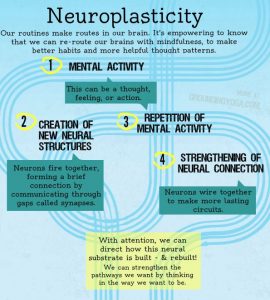What Are Neural Pathways?
As the name indicates, Neural Pathways are passages related to nervous system. An area of the nervous system is connected to another area by neural pathways. What is the importance of neural pathways?
Neurons
Neural pathways communicate information from one area to another area of the nervous system.
A neuron is made up of:
- Cell body
- Axon (away from the cell body)
- Dendrite (towards the cell body)
As axon carries impulses away from the cell body. The bulk of neural pathways are composed of axons. These connections via axons are either single or in a bundle are called nerve tracts.
Short neural pathways are present in grey matter. Long neural pathways are present in white matter.
Talk To Me
The nervous system controls our body via communication through neural pathways. Based on our goals, desires, and habits, the brain tries to modify these pathways.
For example, pathways involved in memory can be improved and extended via multiple repetitions. On a daily basis, we train our brain to create a new pathway. We repeat an action over and over again until it is defined in the brain as a new pathway.
This pathway then becomes part of our brain. According to research, it takes twenty-one days to make or break a habit. This habit formation is dependent on training our brain to create new neural pathways. When it comes to the brain, a core principle to keep in mind is:
“Neurons that fire together, wire together.”
You CAN Teach An Old Dog New Tricks!
 What does behavior change look like in the brain?
What does behavior change look like in the brain?
According to healthtransformer.co contributor, Julie Hani, a Fit4D Certified Diabetes Educator, neural pathways, comprised of neurons connected by dendrites, are created in the brain based on our habits and behaviors. So, the number of dendrites increases the more you perform a behavior. Our brain cells communicate with each other via a process called “neuronal firing.”
Psychologist Deann Ware, Ph.D., explains that when brain cells communicate frequently, the connection between them strengthens and “the messages that travel the same pathway in the brain over and over begin to transmit faster and faster.” With enough repetition, these behaviors become automatic. Reading, driving, and riding a bike are examples of complicated behaviors that we do automatically because neural pathways have formed.
But I Don’t Want To Keep Doing That!
Just because you have formed “bad habit” neural pathways does not mean that you are stuck with those habits forever. As you participate in new activities, you are training your brain to create new neural pathways. The pathways get stronger with repetition until the behavior is the new normal.
The Importance of Repetition in Developing Neural Pathways
It is estimated that it takes 10,000 repetitions to master a skill and develop the associated neural pathway. As well, it takes about 3-6 months for a new behavior to become a habit. Of course, your mileage may vary. With that said, MissionFiT encourages and supports repetition when our athletes are working to achieve their health goals.
Every brain is different
It is important to understand that every brain is different. Each person has their own unique experiences that have shaped their brain and continue to shape it throughout their lives.
Remember, with time, your repetition will pay off when your behavior becomes natural. MissionFiT coaches continue to provide strategies for overcoming barriers, help to create back-up plans, and provide support while athletes take on new goals towards better health.
Developing New Neural Pathways
Connecting a new behavior to as many areas of the brain as possible helps to develop new neural pathways. By tapping into all five senses, we can create “stickiness” that helps form neural pathways.
Follow Your Nose…And Your Eyes, Ears, Fingers…
We all have experiences that changed us. We can recall the sensations: the images, smells, how we felt, etc. So, try to connect your successes or health goals to as many senses as possible. How?
- Visualization
See yourself at optimal health. How does that make you feel? What does it look like? What would you be doing if your chronic conditions were managed without medication?
Read Julie Hani’s full article on The Neuroscience of Behavior Change.
Making Neural Pathways in Class
- Writing with your non dominant hand
- Changing up some of our typical movements in class
- Remembering names after a workout
There are a lot of things we can do to increase our neuroplasticity even at home, like writing with your non-dominant hand. When you do that you add novelty to your nervous system. As a result, your brain starts to shift things around. So if there’s an area of your brain that’s been injured your body can use the other side of the brain to accomplish that task.
Other Resources:
- Enjoy this brief clip from the BBC documentary The Human Body. Learn “how establishing new neural pathways between brain cells is like building a bridge to cross a ravine.” Courtesy of Learning & The Adolescent Mind.
- How We Learn: The Brain’s Neural Pathways. Courtesy of Teacher Tube

